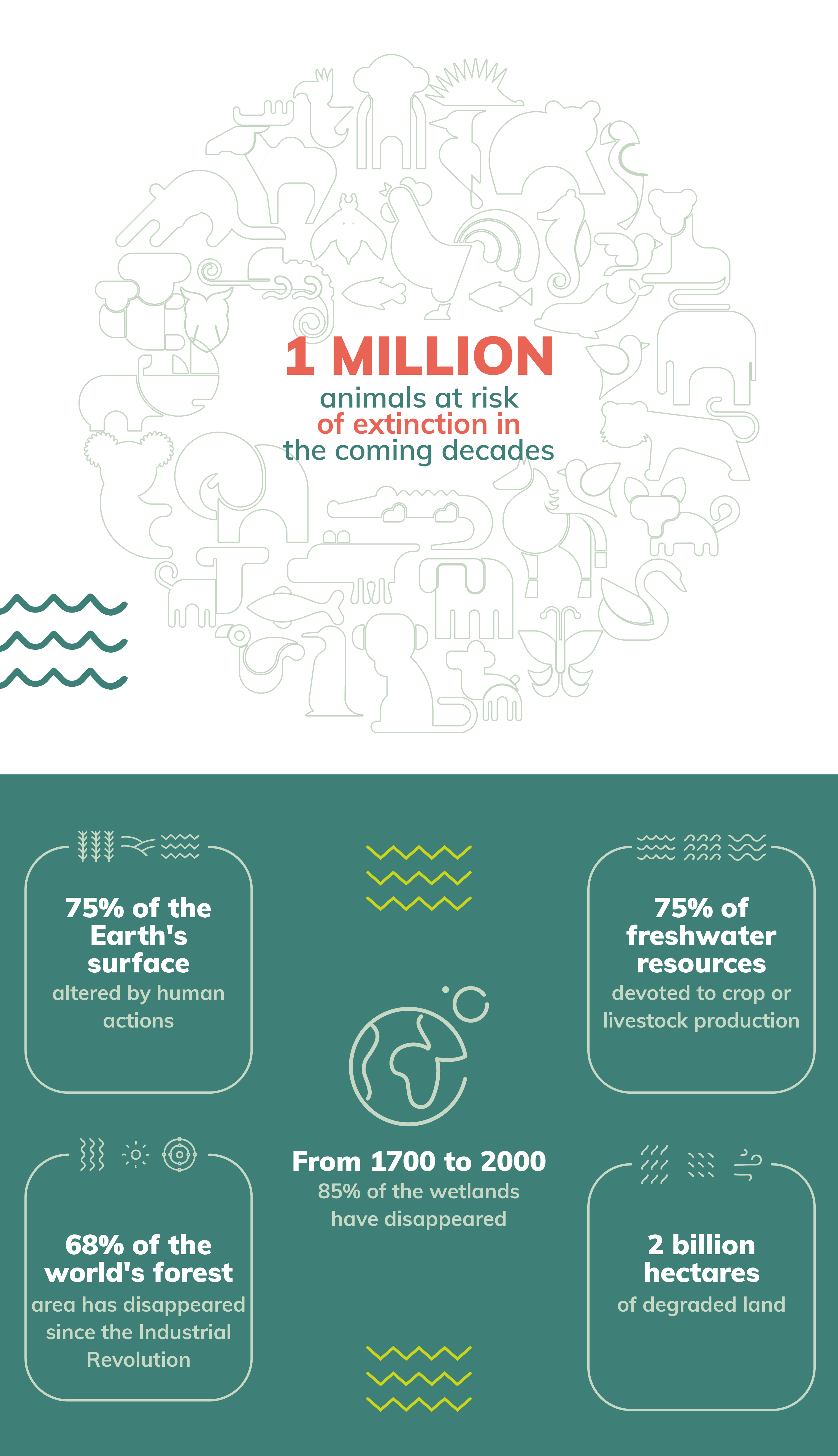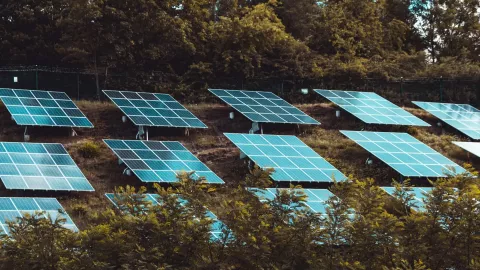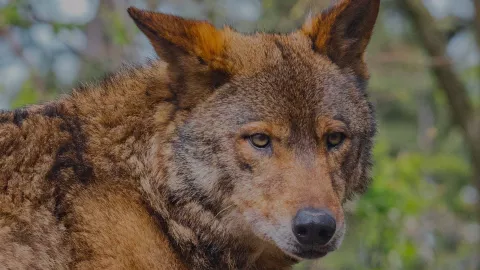Biodiversity: Protecting nature means securing the future
One million. An impressive figure, especially if we are talking about the number of plant and animal species that could vanish or become seriously threatened in the coming decades, according to a UN report released in 2019. And it is important to point out that this 'one million' accounts for 12.5% of all living species, which are estimated at eight million. Biodiversity is what best sustains the balance of ecosystems and the planet in general; it is a critical sustainability factor, which is why it is so important to strengthen it.
We have been hearing warnings about the vanishing of species for several decades now, and the UN has included Biodiversity in its 17 Sustainable Development Goals for 2030. Protecting Terrestrial Life is the 15th SDG, the main mission of which is to "sustainably manage forests, combat desertification, halt and reverse land degradation, and halt biodiversity loss." Focusing on polar bears, giant pandas and rhinoceros is not enough. Concerns about living beings must encompass all continents and all species, whether they are animals or plants, as there are endangered species and environmental threats in every country around the world.
Biodiversity is everyone's challenge
If every living creature on Earth has a role to play - the result of an evolution spanning millions of years, in which every species has adapted to specific habitats, climates, predators, and prey -, Biodiversity is like a house of cards that depends on the stability of all elements. The reasons behind the decline of ecosystems and animal life have been clearly identified and result almost exclusively from human action: deforestation; changes in land use; the introduction of alien animal or plant species; pollution; climate change; overuse of natural resources; urban expansion; and the expansion of communication routes.
But solutions have also been identified, and they basically involve the reinforcement of... Biodiversity. Protecting nature also means trying to restore past conditions, investing in reforestation and the diversification of tree and plant species, and controlling alien species - both animals and plants - for the benefit of those that already existed in a specific location. Programs for reintroducing or recovering certain species (such as the Iberian lynx or the Iberian wolf in Portugal) play an important role in re-establishing the balance of ecosystems. EDP has been investing - at various levels - in several Biodiversity protection projects, as you can see here. [EDP ROLE ARTICLE LINK]. It is also important that more and more people support these programs, both domestically and internationally, and that those who are still harming Biodiversity change their behavior.

In order to comply with SDG 15 and Protect Terrestrial Life, the UN has summarized several suggestions from the IPBES report - that is, political decisions and societal changes that are necessary for protecting Biodiversity, but also for tackling climate change:
Agriculture. Promoting good agricultural practices; carrying out multifunctional landscape planning with integrated management; promoting food sustainability among producers, government organizations, and consumers; conserving the genetic diversity of agricultural varieties and animal breeds; improving transparency; improving food distribution to help local economies; reforming transport chains and reducing food waste.
Marine environments. Encouraging ecosystem-based fisheries management; spatial planning and improved definition of quotas; creating more protected areas, especially marine key Biodiversity areas; reducing pollution reaching the oceans.
Freshwater environments. Collaborative water management and governance, with more inclusion and equity; improved integration of water resource management and landscape planning; reducing soil erosion, sedimentation and pollution; improving water storage; reducing the fragmentation of freshwater policies.
Urban areas. Promoting nature-based solutions; increasing access to public services and creating a better urban environment for low-income communities; providing easy access to green areas; promoting sustainable production and consumption in urban areas, favoring native species.
General. Increasing the involvement of indigenous peoples and local communities in defining policies, reforms and incentives to prioritize Biodiversity. Indigenous peoples and rural communities account for only 5% of the world population, but 'manage' 25% of the land surface, 35% of protected areas, and 35% of the regions with little human presence. Although these areas are also endangered, Biodiversity decline is less significant here.
In October 2021 the city of Kunming (China) will host several meetings of the Convention on Biological Diversity (CBD) - one year after the original schedule, due to the pandemic. This international treaty - promoted by the UN in 1992 - has already been signed by nearly 200 countries and aims to promote Biodiversity protection and sustainable use, as well as a fair distribution of the benefits of using natural resources. This year's Convention - held from October 11 to October 24 - is expected to announce measures to ensure the protection of 30% of the world's land surface and seas. As of now, protected areas account for about 15% of the land surface and 8% of the oceans.


Bees: Biodiversity on an insect's feet
No living creature in the world is as important to all others - plants, animals and humans - as bees. They are not the only pollinators, but their presence in almost every single corner of the world - there are 25,000 to 30,000 species, according to the UN - makes bees the most effective fertilizers when it comes to flowers. Moths, butterflies, wasps, bats, rodents and even monkeys are also responsible for pollinating plants, but on a smaller scale.
Bees are all the more important given the recent changes in agricultural practices. More than 75% of the plant foods we eat depend on pollination, but bees are increasingly threatened by pollution, loss of plant and flower diversity, predation by alien insects, and even diseases and parasites.
Protecting bees and other pollinating animals increases the resilience of plants, especially the fruits and vegetables we eat, helps small producers - those who are most committed to crop diversity - and contributes to fighting hunger in general.
Quality seals to raise awareness
In order to draw attention to Biodiversity, organizations such as the UN and other global or regional institutions often promote 'days' that are dedicated to these issues. For instance, May 22 is International Biodiversity Day, a date which was adopted in the year 2000. And March 3 is World Wildlife Day, which was created by the UN in 2013.
Another way - also for companies - to promote sustainability and more sustainable consumption habits is to create or partner with quality seals and international certifications. Supermarkets nowadays have several products with such quality seals - for the protection of forests, wildlife, dolphins and marine species, or the oceans in general. Organizations such as the Rainforest Alliance, the Marine Stewardship Council, and the Forest Stewardship Council provide some of the most respected quality seals.
Biodiversity must be everyone's goal. It is a cycle which we must help strengthen, as our existence and that of our planet itself depend on it. Protecting Biodiversity has positive effects on the climate, on the fight against desertification and land degradation, on the struggle to reduce pollutants, on agricultural and forest productivity, on resistance to wildfires, and on the sustainability of marine life. Promoting Biodiversity helps improve the well-being and living conditions of everyone, whether they live in a small village hidden in the mountains or in a huge coastal town.

